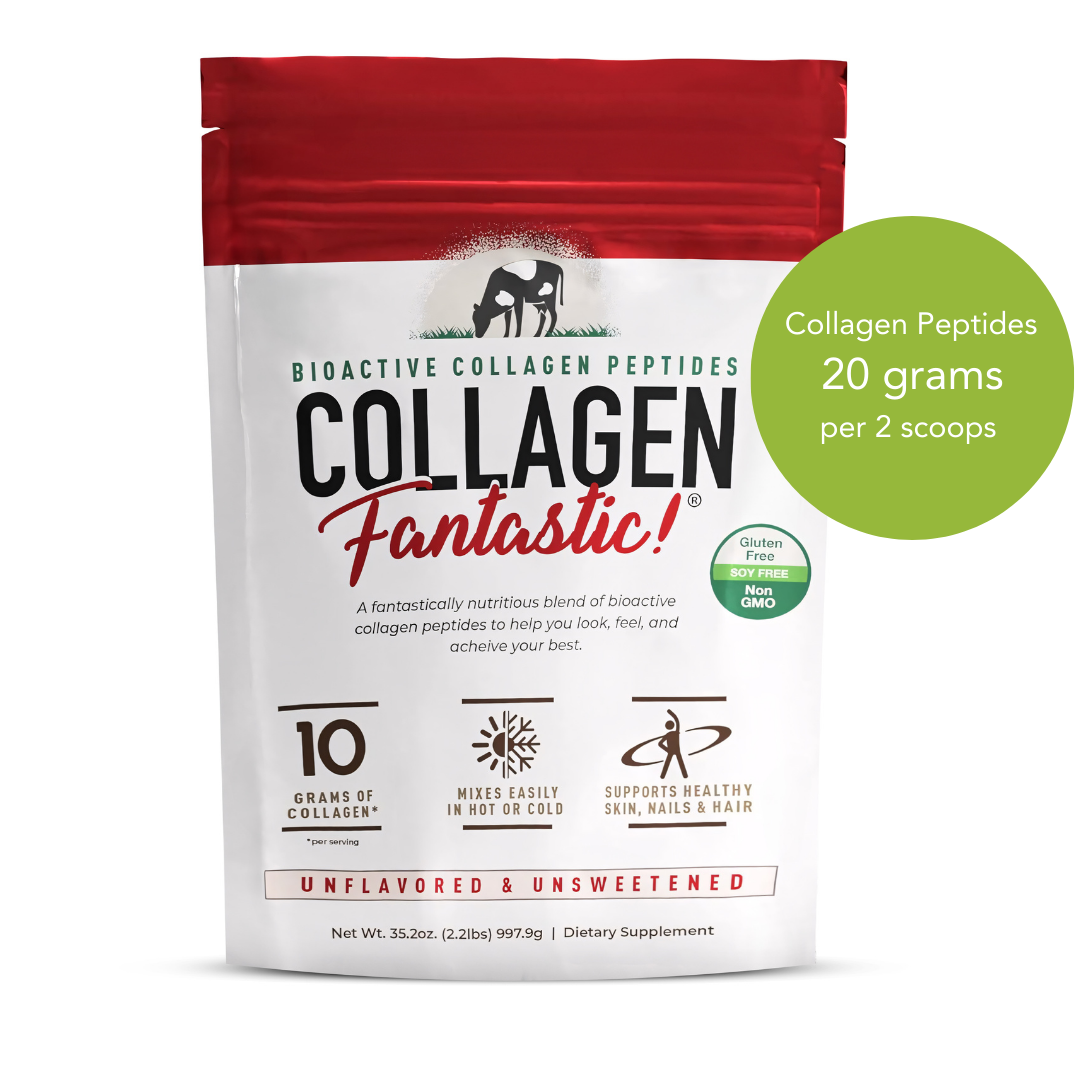Key Takeaways
-
Strength training is the most effective way to boost metabolism, especially after 40.
-
You don’t need hours in the gym—30 minutes of smart, consistent training can build muscle, burn fat, and improve energy.
-
The secret is compound movements, short rest periods, and progressive overload.
-
Proper nutrition and recovery amplify your results; Whey Protein, Creatine Fantastic, and Collagen Fantastic work together to repair, replenish, and rebuild.
-
Consistency and intensity—not duration—drive metabolic and strength improvements.
Introduction: When Time Gets Tight, Training Gets Smarter
Most people assume that to see results, they need long, grueling gym sessions. But life doesn’t always allow that—and it doesn’t have to.
In fact, research shows that short, focused strength sessions are just as effective (and often more sustainable) than lengthy workouts. A 30-minute window, done right, can build strength, increase metabolism, and improve endurance.
The key isn’t more time—it’s better use of time.
This is your guide to understanding how short, efficient workouts fire up your metabolism, what principles to follow, and how to support your body nutritionally for maximum results.
Why Strength Training Fuels Metabolism
Your metabolism isn’t a switch you turn on and off—it’s an adaptive system. The more lean muscle you have, the more energy your body burns, even at rest.
Here’s what happens when you lift:
-
You break down muscle fibers through resistance training.
-
Your body repairs and rebuilds them stronger and thicker (a process called muscle protein synthesis).
-
That repair process burns calories long after your workout ends.
This is called the afterburn effect, or EPOC (Excess Post-Exercise Oxygen Consumption). The more muscle you activate during training, the greater your metabolic boost afterward.
That’s why compound movements—multi-joint exercises like squats, presses, and rows—are the cornerstone of effective, time-efficient training.
Why 30 Minutes Is Enough
When designed properly, a 30-minute strength workout is long enough to challenge your muscles and short enough to maintain intensity.
The benefits:
-
Time-efficient: Easy to fit into a busy day.
-
Focused effort: No wasted minutes between sets.
-
Better recovery: Shorter sessions mean less systemic fatigue.
-
Sustainable: Easier to stay consistent long-term.
In half an hour, you can activate every major muscle group, elevate your heart rate, and trigger meaningful adaptations in muscle growth and metabolism.
Quality beats duration—every time.
The 3 Core Principles of Effective 30-Minute Strength Training
1. Prioritize Compound Movements
Compound lifts recruit multiple muscles at once, maximizing efficiency and calorie burn. Think:
-
Squats and lunges (lower body and core)
-
Rows and presses (upper body)
-
Deadlifts and hinges (posterior chain)
These movements raise your heart rate, challenge coordination, and build functional strength.
Collagen Fantastic plays a crucial role here—supporting tendons, ligaments, and joint health so your body stays resilient through every movement.
2. Keep the Intensity High and Rest Smart
Intensity—not volume—is the driver of results in a 30-minute workout.
Alternate upper and lower body exercises or push and pull movements to keep your heart rate elevated while giving each muscle group short recovery windows.
Smart rest looks like:
-
30–60 seconds between sets
-
Active rest: light mobility or breathing work instead of standing still
This balance maintains metabolic output while preserving form and focus.
3. Progress Over Time
Even with shorter workouts, progress must be measurable. Track one or two key metrics:
-
Slightly increase weights every 2–3 weeks.
-
Add an extra rep or set over time.
-
Shorten rest periods as your endurance improves.
Consistency compounds—steady progression is what drives change, not intensity alone.
Creatine Fantastic helps sustain this growth cycle by improving ATP production (your body’s cellular energy source) and minimizing muscle breakdown with added myHMB®. It ensures your body keeps up with your ambition.
What a 30-Minute Strength Session Should Include
While this isn’t a specific plan, these elements belong in every short, effective session:
1. Warm-Up (5 minutes)
-
Mobility drills, light cardio, or dynamic stretches to increase blood flow and joint readiness.
2. Strength Circuit (20 minutes)
-
4–6 compound exercises
-
3 sets of 8–12 reps
-
Minimal rest between movements
3. Finisher or Core Work (5 minutes)
-
Short burst of high-effort activity (bodyweight squats, plank holds, or carries).
You’ll leave energized, not drained—and your metabolism will stay elevated for hours afterward.
Nutrition: The Missing Link Between Training and Results
Training stimulates muscle growth; nutrition enables it.
Without adequate fuel, your body can’t recover, repair, or build lean tissue efficiently.
1. Protein: The Repair Catalyst
After a 30-minute strength session, your body is primed for muscle repair.
-
Fantastic Nutrition Whey Protein provides complete amino acids that trigger muscle protein synthesis—fast.
-
A shake within 30–60 minutes post-workout helps rebuild muscle and stabilize appetite.
2. Creatine: The Power Source
Shorter, higher-intensity workouts rely heavily on stored ATP.
-
Creatine Fantastic replenishes ATP faster, enhancing strength and endurance.
-
The added myHMB® reduces muscle breakdown and speeds recovery between sessions.
3. Collagen: The Unsung Hero
Strength training stresses joints, tendons, and connective tissues.
-
Collagen Fantastic reinforces structural strength, helping you train harder and stay injury-free.
When combined, these three create a powerful synergy: strength, stability, and recovery—all working together to sustain your metabolism.
The Metabolic Ripple Effect
The benefits of strength training go far beyond calories burned in a single workout. Over time, it changes how your body uses energy.
Here’s what consistent 30-minute sessions can deliver:
-
Higher resting metabolism: More muscle means more calories burned daily.
-
Improved insulin sensitivity: Better blood sugar control and energy stability.
-
Stronger bones and connective tissue: Reduced injury risk.
-
Greater daily energy and confidence: A fit, functioning body supports every part of life.
You’re not just training your muscles—you’re training your metabolism to work for you.
Recovery: Where the Real Change Happens
Even a quick workout demands proper recovery. Your muscles rebuild during rest, not during effort.
Make it count by:
-
Sleeping 7–9 hours each night.
-
Hydrating consistently throughout the day.
-
Refueling with balanced meals that include protein, complex carbs, and healthy fats.
-
Taking Collagen Fantastic or Creatine Fantastic daily to maintain tissue integrity and recovery speed.
Recovery is the multiplier that turns a 30-minute effort into 24-hour results.
How to Stay Consistent When Time Is Tight
Short workouts work best when they’re consistent. If life gets busy, these tips keep you on track:
-
Schedule it like an appointment. Treat your 30-minute window as non-negotiable.
-
Remove friction. Have your gear, playlist, or protein shake ready.
-
Track effort, not perfection. Even 20 minutes is better than skipping entirely.
-
Pair it with routine habits. Morning workouts after coffee, or evening sessions before dinner—build your rhythm.
Sustainability beats intensity every time.
Frequently Asked Questions
1. Can a 30-minute workout really make a difference?
Yes. With compound exercises and minimal rest, 30 minutes of focused strength training triggers the same metabolic benefits as longer sessions—if done consistently.
2. Should I lift heavy or stay moderate?
Aim for a weight that feels challenging by the last two reps of each set, without sacrificing form. Progressive resistance matters more than absolute heaviness.
3. Do I need cardio too?
Yes—but not as much as you think. A mix of 3 strength sessions and 2 light cardio or mobility days per week supports overall metabolism and cardiovascular health.
4. What should I eat afterward?
A balanced meal or shake with Whey Protein (for muscle repair) and carbohydrates (for glycogen restoration) within an hour post-workout maximizes recovery and metabolic response.
The Bottom Line
Strength training doesn’t have to dominate your schedule to transform your health.
Thirty minutes of consistent, focused effort—paired with smart nutrition—can reshape your metabolism, strengthen your body, and boost your energy for the long haul.











